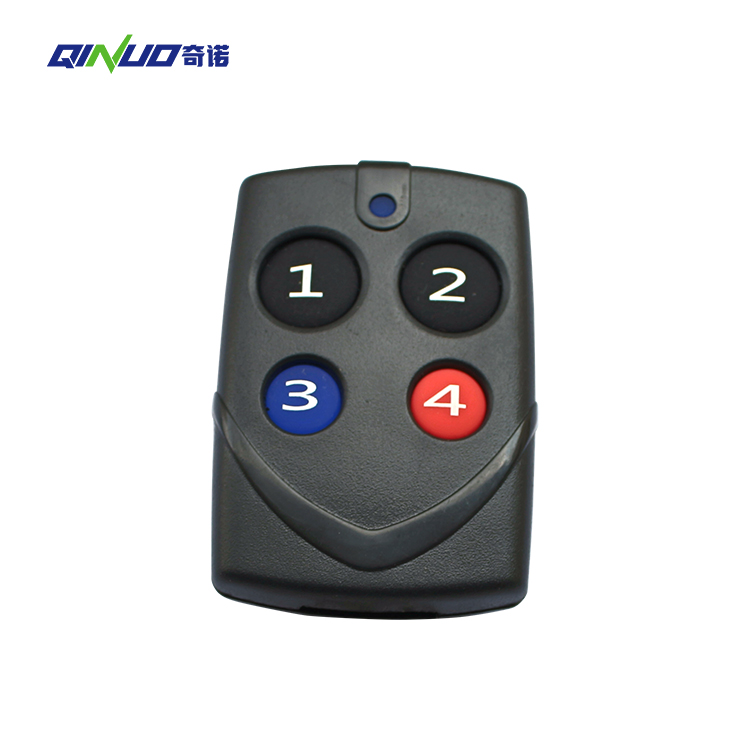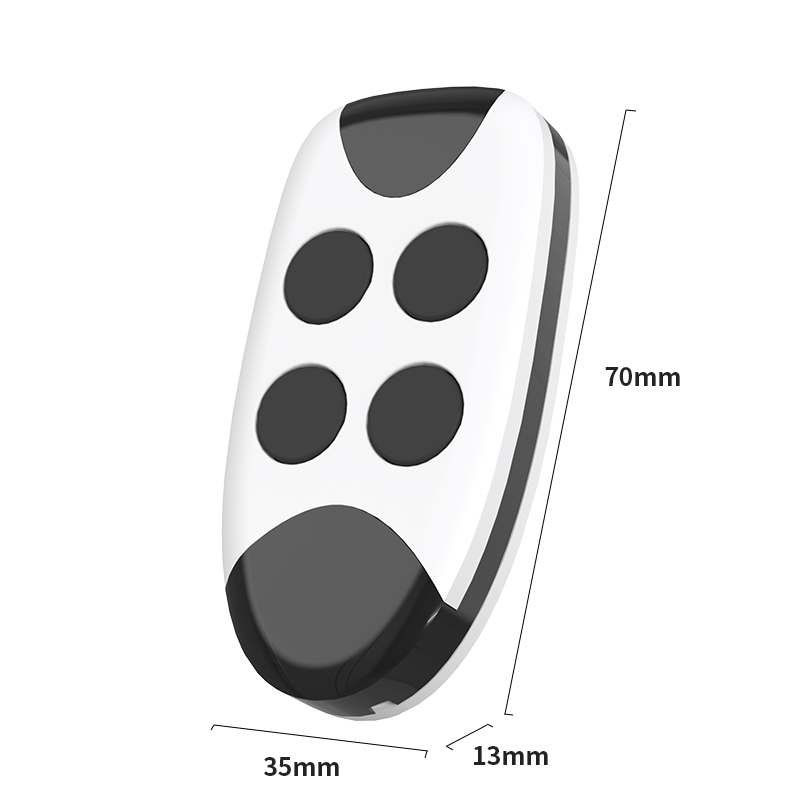Garage door remotes are common devices in modern households, used to control the opening and closing of garage doors from a distance. With technological advancements, universal remotes have become a convenient option, as they can be compatible with different brands and models of garage doors. Understanding the working principles of universal remotes is crucial not only for selecting the right device but also for troubleshooting issues when they arise. This article will explore the working principles of universal garage door remotes, including their core technology, functional features, and practical applications.

1. Basic Principles of Garage Door Remotes
Garage door remotes operate using wireless signals to control the garage door's movement. The system primarily consists of two components: the remote control and the garage door receiver. The remote control sends a signal, and the garage door receiver receives and decodes this signal to perform the corresponding action.
1.1 Wireless Signal Transmission
The remote control transmits control signals via radio waves (typically radio frequency signals). Radio waves are a type of electromagnetic wave that can travel through the air or other media. When a button on the remote is pressed, it converts the control signal into a radio frequency signal and emits it through an antenna. The garage door receiver’s antenna picks up these signals and decodes them to operate the garage door.
1.2 Signal Encoding and Decoding
To prevent interference and enhance security, garage door remotes use signal encoding technology. Each remote control transmits signals that are encoded, making them unique to the garage door receiver. When the remote emits a signal, the garage door receiver decodes the signal, and the door only responds if the decoded information matches the preset code. This encoding technology effectively prevents unauthorized access, improving security.

2. Principles of Universal Remotes
A universal remote is designed to be compatible with multiple brands and models of garage doors. Its operating principle is similar to that of dedicated remotes but includes additional functions in encoding and decoding to support various brands and models.
2.1 Coding Learning Function
A key feature of universal remotes is their coding learning capability. Universal remotes typically learn the code from the garage door receiver through several methods:
Auto-Learning Mode: The user brings the universal remote close to the garage door receiver and presses a learning button on the receiver. The receiver enters learning mode, during which the user presses a button on the remote to allow the receiver to recognize and record the remote’s signal code.
Manual Input Mode: Some universal remotes allow users to manually input the garage door’s code. This mode usually involves referring to the garage door receiver’s user manual and entering the receiver’s code into the universal remote following specific steps.
Frequency Matching: Universal remotes can automatically scan and match the garage door receiver's operating frequency. The user needs only to bring the remote close to the receiver, and the remote will automatically detect and record the frequency information of the receiver.
2.2 Multi-Frequency Support
To be compatible with different brands and models of garage doors, universal remotes typically support multiple frequencies. Garage door remotes operate on various radio frequency bands, such as 315 MHz, 433 MHz, etc. Universal remotes have built-in receiving modules that cover these frequency ranges, allowing them to communicate with garage door receivers operating on different frequencies.
2.3 Adjustable Coding System
Universal remotes generally feature an adjustable coding system, allowing users to configure the remote’s coding mode to match different garage door receivers. For example, some remotes support learning various coding protocols or encryption algorithms, and users can set the remote according to the requirements of the garage door receiver.
3. Advantages and Applications of Universal Remotes
3.1 Strong Compatibility
One of the main advantages of universal remotes is their strong compatibility. They can work with multiple brands and models of garage door receivers, eliminating the need for multiple remotes for different garage doors. Whether in residential or commercial settings, universal remotes simplify operation and enhance convenience.
3.2 Cost-Effectiveness
Using a universal remote can lower overall costs. Compared to purchasing dedicated remotes for each garage door brand and model, universal remotes are usually more economical. This makes universal remotes a cost-effective option for replacing or adding remotes.
3.3 Easy Management
For users with multiple garage doors, a universal remote provides a convenient management solution. A single remote can control all the garage doors, avoiding the hassle of carrying multiple remotes. Additionally, the unified management approach helps reduce the time spent searching for remotes.
3.4 Technological Advancements
With technological advancements, modern universal remotes continually improve in functionality. For example, many universal remotes now offer enhanced security features, including more complex encoding algorithms and encryption technologies to prevent signal hacking. Additionally, some universal remotes integrate with smart home systems, providing a higher level of automation.
4. Installation and Maintenance
4.1 Installation Steps
Select the Appropriate Universal Remote: Choose a universal remote that is compatible with the brand and model of your garage door receiver. Ensure the remote supports the required frequency and encoding protocol.
Enter Learning Mode: Follow the user manual of the universal remote and garage door receiver to enter learning mode. Typically, the garage door receiver has a learning button that needs to be pressed during the process.
Pair the Remote: In learning mode, press a button on the universal remote to allow the receiver to record the remote’s signal code.
Test the Function: After pairing, test the remote to ensure it correctly operates the garage door. If necessary, repeat the steps to ensure proper pairing.
4.2 Maintenance Tips
Regular Battery Replacement: Universal remotes usually operate on batteries, so replace the batteries regularly to ensure proper functioning.
Avoid Interference Sources: Wireless signals may be affected by interference from other electronic devices. Avoid placing the remote in environments with high signal interference.
Clean and Maintain: Regularly clean the remote to maintain its performance. Avoid exposing the remote to moisture or extreme temperatures to extend its lifespan.
Check Compatibility: If you replace the garage door receiver or update the remote’s firmware, you may need to re-pair and set up the remote to ensure compatibility with the new device.
Conclusion
Universal remotes for garage doors offer significant advantages due to their compatibility, cost-effectiveness, and convenience. Understanding their working principles, including signal encoding and decoding, frequency support, and coding learning functions, enables users to make informed choices and troubleshoot issues effectively. As technology continues to advance, universal remotes will feature even more enhancements, offering greater convenience and security. If you are considering a universal remote, this article should help you understand its principles and benefits, enabling you to make a wise decision.

-
Office ViewQinuo Electronics Co., Ltd.was founded in 2009,it is a high-tech company that integrated R & D, manufacturing, sales and service for 15 years,which is mainly specialized in providing sensors of automatic door, control system of door and gate, car key remote, auto parts etc. The company currently has four independent brands: U-CONTROL, U-SENSORS, U-AUTOGATES and U-AUTOKEYS.
-
got questions? call us
+86 13960286508
-
fax :
+86 595 22901208 -
Email :
[email protected]
-
address
- No.991 Xingxiu Road,Taiwanese Investment Zone, Quanzhou, Fujian Province,P.R.China











